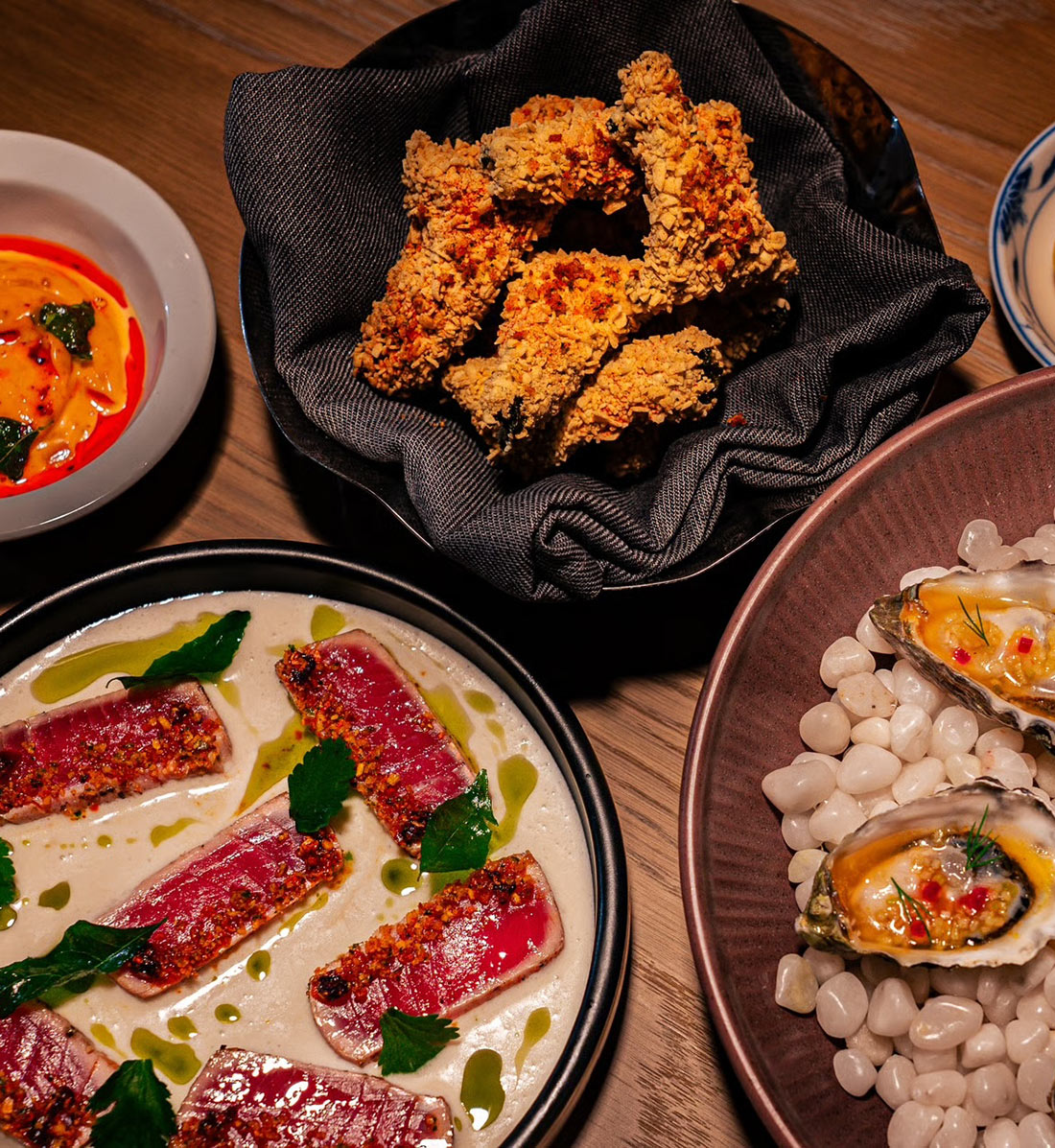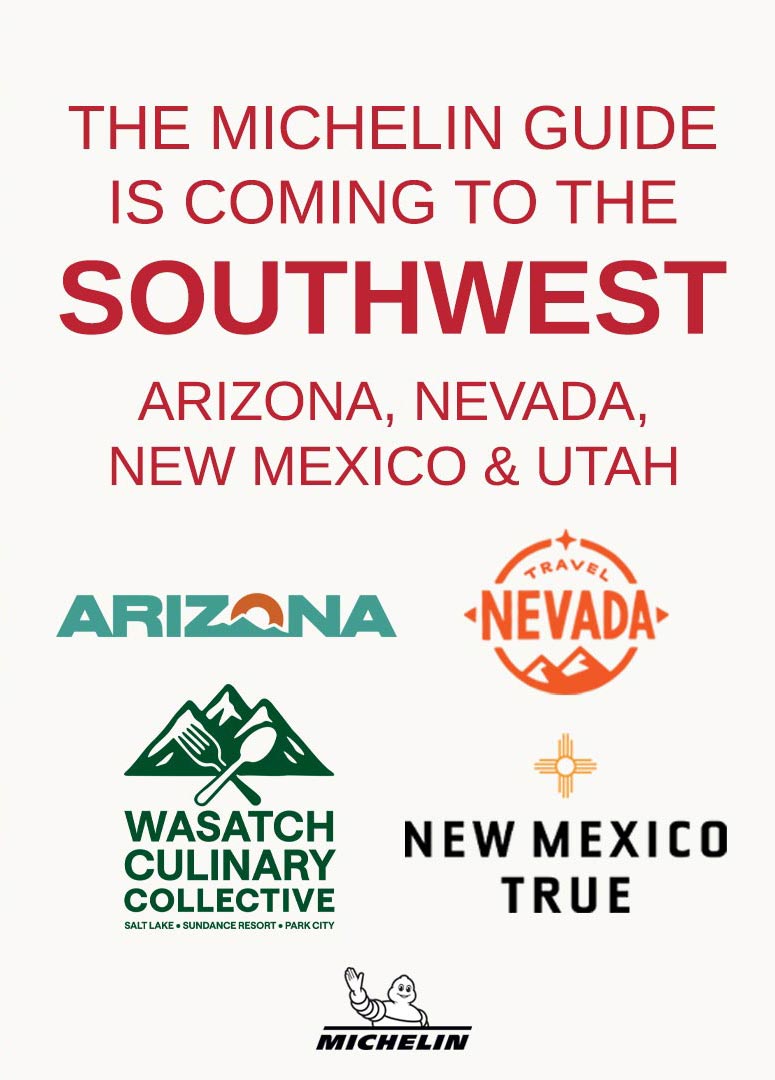It used to be that those abstaining from alcohol had two choices: either sip a ginger ale in a rocks glass or enjoy something candy-colored that looked more appropriate for a child. Times have changed though, with everything from elegant mocktails to juice pairings giving wine and cocktail lists a run for their money.
Whether it’s because of religious beliefs, pregnancy, or a lifestyle choice, there are many reasons to choose the zero-proof route, but many restaurants haven’t fully embraced it—until now. “You used to find maybe one mocktail on a menu,” explains Elizabeth Parker, general manager at Lutèce. “With alcoholic drinks, you get a winding experience with more interesting conversations but if there’s one mocktail on the menu, what are you going to do—order that three times?” Offering a complete non-alcoholic (NA) experience is a passion project for Parker, who personally abstains. “More people are realizing that you don’t need to sacrifice a full-blown culinary experience when avoiding alcohol.”
Unlike mocktails, which offer a NA version of a classic, the zero-proof drinks at Lutèce have been designed to stand on its own. “It’s purposeful, seasonal and culinary-based. In wine, there’s a saying that what grows together, goes together, and we apply that to our NA drinks too.” While Lutèce may avoid mimicking traditional drinks, there is one mocktail that was a must. “We had to have a NA substitute for an aperol spritz,” laughs Parker. “We have this great patio in Georgetown and if you squint, you’ll think you’re in France.” It took them several attempts, but now The After All Spritz has all the joy of a sunny afternoon in France without any of the alcohol.

“You still get the laughs and the same feeling of going out with your friends, but with NA drinks, you get your morning back,” says Raul Torrento, beverage director at Cranes. Their approach is slightly different, inviting guests to select a flavor profile rather than a single drink. “With warmer temperatures now, it’s all about fruity, effervescent or citrusy, and then we create a drink based around that. It allows us to be more flexible with what’s available,” he explains. Cranes offers three to six NA drinks on their cocktail menu at all times.

NA Pairings Are On The Rise
A festive cocktail sans the alcohol may be a great way to kick off a meal, but how does it translate to pairings? Restaurants like Victoria & Albert’s, Meteora and Oyster Oyster are leading the charge.
“We pair food and wine all the time, but I wanted to do something without any alcohol for a long time,” says Israel Perez, Maître d'hôtel and Sommelier at Victoria & Albert’s. Together with Chef Matthew Sowers, they started sharing notes and conspiring. “We asked ourselves, ‘how can we leverage our zero-proof pairing to really enhance the experience?’”
Ingredient-driven, the team designs drinks that highlight and complement the flavor profiles of the food just as they would when selecting the perfect wine. “We look at the regionality of the food, the sugar, acidity, intensity, etc.,” explains Perez. “If I’m doing wine, Chef Sowers tells me about the dish and we come up with a decision about which wine pairs best. Now we do that with our NA drinks too.”
“NA drinks let us bring out our own creativity and are just as intentional and thoughtful as a dish,” says Perez. They’re also created with the same care and devotion as the food. Victoria & Albert’s Milk Punch, made with Meyer lemons, coconut milk and cherries, involves many steps—and days—before it’s ready to be served.

Jordan Kahn, Chef/owner of Meteora, believes that NA pairings are more about exploring something new rather than skipping out on alcohol. “What makes a great pairing? It’s making sure you’re building something and telling a flavor narrative that keeps you engaged.” He also believes that pairings act as “elegant counterparts.” To that end, alcohol need not enter the equation. “Our NA pairings aren’t a substitute, but a welcome reprieve,” he explains. “They evolve and have more character to them.”
Five pairings complement his tasting menu, including a fizzy kiwi juice with roasted pineapple and yuzu to a drink using purple Incan corn, blood orange and green tomato juices and sweet potato skins. Whether the bar inspires the kitchen or the kitchen inspires the bar, Kahn believes in a holistic experience that surprises and delights guests.

Rob Rubba of Oyster Oyster also derives satisfaction from creative NA pairings that challenge diners’ perceptions. “I’m more intrigued by juice pairings,” he says. “It’s something that’s not purchased but made in house. There’s something very magical about that.” He also believes in an added benefit. “You’re enjoying the meal clear and really understand what’s going on.”
Their current pairing includes four distinct drinks. Wild pineapple weed, lemon verbena and marigold buds comprise the opening beverage with a “refreshing, electric pop.” A carrot cordial with caramelized white miso and fig vinegar is washed with vegan butter for a nutty element. How about sipping on chanterelle mushrooms? Apples infused with preserved apricots, wild bay leaf, and yes, chanterelle mushrooms, are blended for a delicate, yet complex complement to the roasted lion’s mane entrée. “These drinks bring us back to the essence of why pairings exist—to match terroir with cuisine.
Inspiring diners to think beyond the wine pairing, these drinks are inspiring chefs and beverage directors too. “That’s the exciting part for all of us,” says Rubba. “We’ll get in an ingredient and think, ‘that would make a really cool drink.’ The creativity has gone from the plate to the glass.’”




















